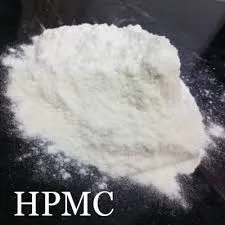
des. . 26, 2024 00:10 Back to list
Exploring HPMC Density Characteristics and Their Implications for Various Applications
Understanding HPMC Density A Comprehensive Overview
Hydroxypropyl Methylcellulose (HPMC) is a widely utilized polymer in various industries, particularly in pharmaceuticals, food, and construction. Its unique properties make it a valuable component in different applications. One critical aspect that affects its functionality is HPMC density. Understanding HPMC density is essential for optimizing its use in specific applications, ensuring the desired performance and effectiveness.
What is HPMC?
Hydroxypropyl Methylcellulose is a semi-synthetic polymer derived from cellulose, a naturally occurring polymer found in plant cell walls. HPMC is created by chemically modifying cellulose through etherification, which introduces hydroxypropyl and methyl groups. This modification enhances solubility in cold water, making HPMC a versatile ingredient in various formulations. It can act as a thickener, stabilizer, film-former, or binder, adapting to the requirements of different manufacturing processes.
The Importance of Density
Density, defined as mass per unit volume (typically expressed in grams per cubic centimeter or g/cm³), is a fundamental physical property that greatly influences the behavior of HPMC in various environments. The density of HPMC can affect its flow characteristics, solubility, and overall performance in a formulation. In industries such as pharmaceuticals, where precise dosages are critical, understanding the density of HPMC is essential to ensure consistency and accuracy in drug formulations.
Factors Influencing HPMC Density
Several factors can influence the density of HPMC, including
1. Molecular Weight The molecular weight of HPMC plays a significant role in determining its density. Higher molecular weight HPMC tends to have a greater density due to an increased number of hydroxyl groups that contribute to intermolecular interactions.
hpmc density

2. Degree of Substitution The degree of substitution (DS) refers to the average number of hydroxymethyl or hydroxypropyl groups substituted on the cellulose backbone. A higher degree of substitution typically results in lower density, as the increased volume from the substituents may lead to a less compact structure.
3. Water Content HPMC is hygroscopic, meaning it can absorb moisture from the environment. The presence of water can significantly impact the density of HPMC, making it crucial to control moisture levels in formulations to achieve the desired density and performance characteristics.
4. Processing Conditions The conditions under which HPMC is processed, including temperature, pressure, and mixing speed, can also influence its density. For example, high shear mixing may lead to a denser product due to the alignment of polymer chains.
Applications and Implications
The density of HPMC is a key consideration in its applications. In the pharmaceutical industry, for instance, the density can affect the dissolution rate and bioavailability of drug formulations. A higher density might lead to slower release rates, while a lower density could enhance solubility and absorption.
In the food industry, HPMC is often used as a fat replacer, emulsifier, or thickening agent. The density of HPMC can influence the texture and mouthfeel of food products, impacting consumer preferences.
In construction, HPMC is frequently employed in mortar and plaster formulations. The density of HPMC can affect the workability and curing time of these materials, making it essential for achieving optimal performance in building applications.
Conclusion
HPMC density is a vital parameter that affects its functionality across various industries. By understanding the factors influencing HPMC density, manufacturers can optimize their formulations to achieve desired properties and performance. Continuous research and development in this area will unveil new possibilities for HPMC applications, further enhancing its utility in diverse fields. Whether in pharmaceuticals, food, or construction, the importance of HPMC density cannot be overstated, making it a crucial focus for scientists and industry professionals alike.
-
Versatile Hpmc Uses in Different Industries
NewsJun.19,2025
-
Redispersible Powder's Role in Enhancing Durability of Construction Products
NewsJun.19,2025
-
Hydroxyethyl Cellulose Applications Driving Green Industrial Processes
NewsJun.19,2025
-
Exploring Different Redispersible Polymer Powder
NewsJun.19,2025
-
Choosing the Right Mortar Bonding Agent
NewsJun.19,2025
-
Applications and Significance of China Hpmc in Modern Industries
NewsJun.19,2025







